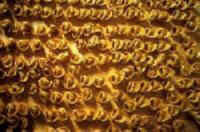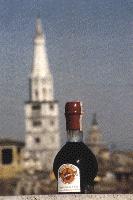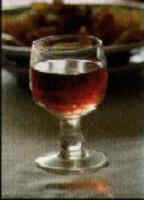|
|
The genuine taste of Modena |
|
|
|

Modena's cuisine is popular with gourmets from all over Italy and a large number of countries world-wide, and offers specialities including prosciutto ham, tortellini, zampone, balsamic vinegar, parmesan cheese, lambrusco, cherries and nocino. Special long-established Consortiums do valuable work in guaranteeing the authenticity of these products and providing information, documentation and promotion. However, the Chamber of Commerce has now combined with them to launch the "Modena a tavola" (Modena at table) mark, awarded only to the best food and drink, to promote knowledge and consumption of genuine local products. A typical Modena menu owes almost everything to locally produced pork and cheese, and starts with hors d'oeuvres of prosciutto, which must be from the best production zone of the Panaro valley, and cured at Samone, Vignola, Verica or Montecenere. After 10/11 months, hams produced in this area are more strongly flavoured than those from the Parma production zone. Traditionally, the pasta course has to consist of tortellini, delicious little packages of pork, prosciutto and parmesan cheese folded in a special way. The main course, especially in winter, is inevitably zampone, pig's trotter stuffed with minced pork and natural flavourings. In bygone days housewives had to struggle to cook zampone without allowing the skin to burst, but thanks to the convenient foil-packed pre-cooked variety provided by modern technology, these worries are now a thing of the past. 
The salad has to be seasoned with the traditional balsamic vinegar, a product with centuries of history. The grape must used in its production should be made from Trebbiano white grapes grown in the hills, while time and a series of transfers to barrels made of different woods do the rest. Traditional balsamic vinegar, which can command astonishingly high prices amongst connoisseurs, is a greatly prized local product with a delicious blend of sweet and sour in its flavour. The cheese course inevitably consists of parmesan cheese; to appreciate its full quality and the grainy consistency which is behind its local name of "grana", parmesan should never be cut into slices. Simply sink the small knife provided into the cheese and press gently to the side to break off a mouth-watering flake. 
Naturally, the wine will be a lambrusco, from Sorbara, S. Croce or Castelvetro, all with D.O.C. guaranteed authenticity and an ideal accompaniment to the entire meal. The Sorbara type, with its ruby red colour and fragrance of violets, is the most delicate and has the lowest alcohol content. S. Croce lambrusco is the strongest (although it still only reaches 11°) with the most intense fragrance, while the Castelvetro wine is red in colour and comes from the dry soil of hillside vineyards. There is no point in scouring Modena for lambrusco which has been aged, since this wine is at its best young, savoured as soon as the cork leaves the bottle, with all its sparkle intact. The foam that fills the glass when the wine is poured should disappear immediately, as an old proverb tells us. In the words of an imaginary patron of a hostelry where lambrusco is served, "if the foam goes away I'll stay, but if the foam stays I'll be the one to leave". Another proverb in strictly Epicurean vein recommends "bread one day old, wine one year old and a girl eighteen years old". If the season is early summer, the fruit course will be Vignola cherries (for the rest of the year, these are available preserved in spirits, produced by local companies to the type of recipe still in use in many homes). The liqueur will be nocino, made by steeping green walnuts, traditionally picked on the night of St John the Baptist's Day, in alcohol. |
|
© 1997 - Provincia di Modena - Made by
|
|